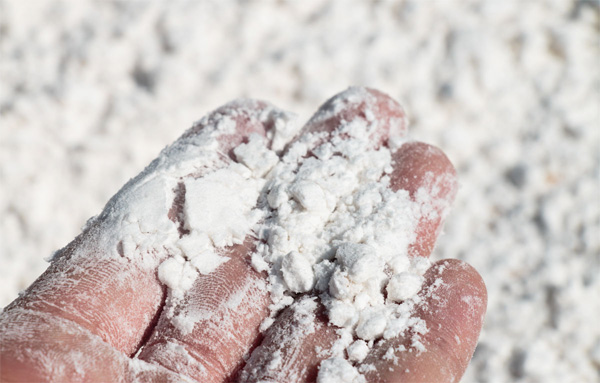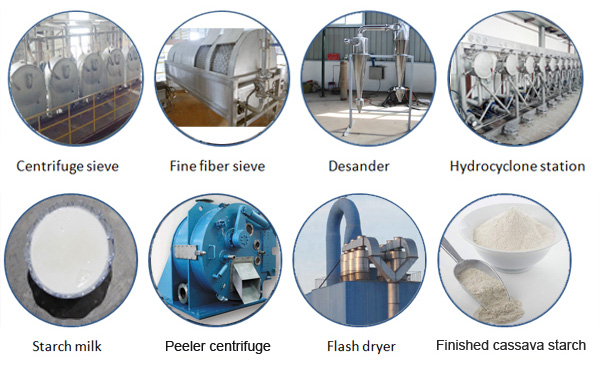Can the cassava starch exceed the potato and corn starch in the global market ?
Cassava starch is a powder obtained by dehydration and drying of starch after extraction from cassava. It has two major categories of raw starch and modified starch, and is widely used in food industry and non-food industry. Modified starch can be tailored to the specific requirements of the user for special applications.
Although corn and potato starch "dominant" most of the global starch market, but the substitution of cassava starch has become more and more obvious. More importantly, potatoes and cornstarch have a significant downward trend, including undesired cereal flours, which have a poor gelation ability and looks bad. Cassava starch can withstand long cooking times, maintains performance during food hot processing and freezing, and remains highly viscous and clear after complete dissolution.
 Starch
Starch
Since cassava starch does not contain allergens such as nuts and gluten, making it an ideal ingredient for many foods, consumers do not have to worry about intestinal discomfort due to the intake of cassava starch. In addition, researchers say that cassava starch can lower cholesterol levels, maintain healthy blood sugar levels, and prevent constipation.
In addition, cassava contains vitamins and minerals such as calcium, magnesium, folic acid and iron, which are very helpful for the health of pregnant women. Cassava also helps promote the metabolism of carbohydrates, thereby increasing the intake of cassava can help to maintain weight.
Cassava starch in Europe
Cassava was originally produced in Brazil and later spread throughout the South American continent, and later to Spain, Portugal and most countries in West India, Asia and Africa. The popularity of global trade and the demand for gluten-free products in the European market (many people with gluten allergy in Europe due to ethnic and genetic reasons) have led to the rapid development of cassava in the European market. However, the cassava market in European countries is still affected by the Free Trade Agreements of the Third World countries.
 Cassava starch processing plant
Cassava starch processing plant
In order to promote the development of the starch industry in Europe and the whole world, the European Starch Trade Association has teamed up with the Vietnamese FTA to increase opportunities in emerging markets in Vietnam and to promote European services, industries and agricultural imports.
Indonesian cassava starch market
In Southeast Asia, Indonesia's cassava starch market is far less than Vietnam. In 2017, Indonesia still needs to import cassava starch. The price of imported cassava starch is lower than that of domestic cassava starch. In 2017, the import volume of cassava starch in Indonesia was about 600,000 tons to 1 million tons, which is almost the same as the average annual import volume.
Suharyo Husen, director of the Indonesian Cassava Organization (MSI), said that Indonesia needs 8.5 million tons of cassava starch every year, and there is still a large lack of this food ingredient in Indonesian.
But actually, the import of cassava powder is still attributed to the excessive price difference between imported cassava starch and Indonesian cassava starch, such as cassava starch imported from Thailand, which is priced at 4,000 rupiah per kilogram in Jakarta, while the price of Indonesian cassava starch, It has reached 5,000 rupiah per kilogram. Suharyo Huse said that because of this situation, Indonesian digital cassava starch producers stopped production, and many Indonesian cassava starch factories closed down in the first half of 2017.
 Main cassava starch machines from Doing Company
Main cassava starch machines from Doing Company
In fact, if the supply and price of cassava can remain stable, Indonesia's cassava starch processing industry should have very good economic benefits. It is reported that the current cassava agricultural system in Indonesia has not improved. It is well known that in addition to being used as a raw material for food, cassava starch is also used in industrial production uses such as paper making, baze batik and synthetic boards. Every year, paper mills need 400,000 tons of cassava starch, batik industry and synthetic board industry every year demand is 100,000 tons.
Africa cassava starch industry condition
It is worth mentioning that half of the world's cassava is produced in Africa, especially Nigeria. However, due to the weak industrial base in Africa and the lack of modern processing technology and machinery, the cassava starch industry in Africa has not yet formed a scale, although there are some starch processing plants, but the overall competitiveness in the global market is weak. Now, Doing Company has completed two cassava starch processing plant project in Nigeria, two cassava flour processing plant in Tanzania, and several garri processing factory in Africa, also have the cassava starch processing plant project in Indonesia, each year, Doing Company went to Africa to participate in the exhibition, we know very well about the situation of the cassava processing industry in Africa.
Cassava starch and cassava granule are more popular:
Despite the many forms of cassava extract, consumers still prefer cassava starch and cassava granules, and the consumption of cassava granules in the form of granules exceeds that of all other forms of cassava processing. They can be applied to soups, pies, puddings, breads, sauces, meat products, noodles, chocolates, biscuits and ice cream.






